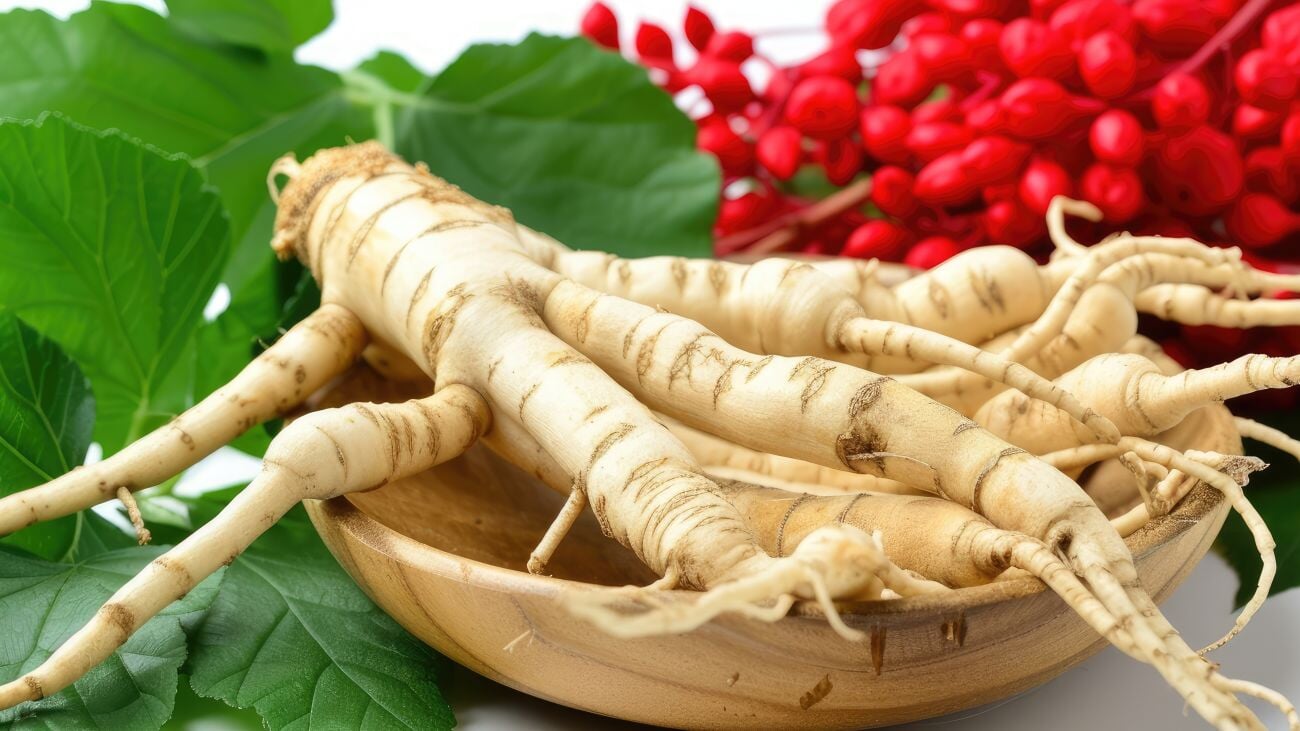Natural Product Variations
Occasionally, we get questions about why our natural powders (a.k.a. “the new batch”) may vary in taste, color, and smell.
In fact, some customers have a certain expectation about how a product should look, and in some cases, it is different from what they expected.
This may cause some customers to think there is something wrong with the product -- when in fact this new batch may be even higher in nutrition, taste or quality. For this reason, you can't judge quality and nutritional potency only on taste, smell, and color.
We are experts in the powders we sell and we work very hard to make sure all our products are of the highest quality possible before we deliver it to our valuable customers.
For example, someone may tell us they don’t like a powder because the one they ordered from a different company looked or tasted different. We have also had customers tell us that they grow the exact plant (that they ordered in powder) in their yard or farm and can’t understand how the professionally-dried powdered version can look so different!
Our Master Herbalist has done a wonderful job in explaining why this happens in the question-and-answer format below. And as always, we invite your comments in the discussion below or to contact us anytime.
1) Why does the color change in the products I buy?
The process of drying and preserving
There are many ways to naturally dry and preserve a food, including:
- low-temperature drying,
- shade drying,
- air drying,
- sun drying and
- freeze-drying
Each food responds better to one process over another. For a long time, and even to this day, superfoods are dried based on traditional methods by the culture that grows the food. Today with modern technology, we have access to more advanced drying, extracting and preserving processing.
For example, berries do very well with the freeze-drying method because they tend to go bad much faster than most foods and freeze-drying solves that problem. While freeze-drying may not be a traditional method, it provides us with a food that will lose less nourishment in the process and produce a long-lasting end product.
The results will always be based on what raw materials you begin with. For example, if we were freeze-drying blueberries and used the exact same freeze-drying method every time, there is still a chance that the end-product may be a bit different from the last batch that was made. Sometimes the smallest factors in seasonal changes like rainfall or how long the berries were set aside before going through the drying process, can have a profound difference in the end result.
When you dry a food, you are essentially removing the water from that food. The water is what gives the food a bright and vibrant color, look and taste. One day of sitting around can make all the difference in the world. Therefore when you dry a food no matter what the process being used is, the age of the food may change the color and taste.
2) I heard that the fertility of the soil affects the plant's nutritional values, is this really true?
The Soil
In order to answer this question, there are two areas that need to be reviewed.
First, is understanding the type of soil being used and whether it is the most conducive to grow that food. This is why we do our best to source a food from a climate it is known traditionally to grow in.
For example, Acerola cherry from Brazil and Maca from Peru:
A food thrives in specific areas where it traditionally grows because that environment is most conducive for its growth.
Second, is whether the growers are taking proper care of the land and soil by allowing it enough time between crops for remineralization. It should be noted that the most traditional way to help with this process is to use parts of the plant or food that are not being consumed as food for re-nourishing the soil. By giving back to the earth, the earth will give to you a beautiful and nourishing food. Traditional wildcrafters for a long time would do what was known as an “offering” when they wildcrafted herbs. Once they took what they needed (and no more), they placed some tobacco in the ground to give back to mother earth. Even if the food was grown in the perfect place with the richest soil, each crop would still yield something a little different. This is a very big reason why extracts and juices have become such a popular way of consuming herbs and superfoods. They are a very effective way to concentrate the constituents within these foods and herbs to produce a more consistent end product.
3) Are nutritional values standardized?
No, we sell whole food, juice and full-spectrum extract powders. With a few exceptions, like curcumin and rosemary.
It is very important to understand the difference between the two main types of extracts.
The first is a standardized extract which, put in simple terms, is a natural drug. This form of extract is when the herb is fractionated by isolating specific constituents (which are thought to be what makes the herb do its job) and raising them to above what is naturally found within the herb. This type of extract produces on a whole a very unbalanced end product. Here is the issue with a standardized herb. When you standardize a food or herb essentially you are taking the “buffer system” or “micronutrient metabolic constituents” away from this herb and now you no longer have a safe and perfectly balanced herb.
The other type of extract is known as a “full-spectrum” extract. With this type of product, all constituents are being concentrated and you are not throwing off the natural balance of the food in the same way as a standardized product. This is by far, a better and much safer way to produce and use extracted herbs as the end product is more balanced. Some might say that both of these extracts are a form of standardization and I agree there is a fine line, but, the line does exist. These are also done in a variety of ratios depending on the herb.
When looking at a ratio concentration like 1:1 it means that there were equal parts of both herb and extracting medium when preparing the product. The number on the left represents the proportion of herb and the number on the right represents the liquid used in the extraction process.
When you have a 10:1 it means you have 10 times the concentration. So, if you were to take 500 mg of a 10:1 extract it would be equal to taking 5000 mg of the whole crude herb. A full spectrum extract or juice powder is the best way to produce an end-product if your goal is consistency.
4) What is the difference between cultivated and wild-harvested? I understand that wild-harvested is more potent, is that true?
- Cultivated means it has been grown in a more “controlled” environment like farmland.
- Wildcrafted means it is grown in the wild, in an area native to where that food naturally grows like the mountains or the rainforest.
There are several reasons why wildcrafted is somewhat superior to cultivated foods and herbs.
First, the land and food grown in the wild are respected by the local people and not messed with or altered in any way. They understand and appreciate the food’s medicinal values. The food simply grows at the proper time, so animals and people native to the area can use it as a source of nourishment, medicine, and income (What!? ... You have never seen 2 gorillas selling acerola cherries at a local market in Brazil?).
With wildcrafting, there is no “forcing” it to grow because the people native to the area understand that only during specific times of the year, that area will produce the most nourishing form of that food. With wildcrafting, there is never a need to be concerned about soil integrity because nothing is being overly cultivated. For those concerned about environmental issues linked to soil contamination, with wildcrafting, these plants have a natural ability to adapt to their surroundings (because it is their home) and still be able to produce a great end-product. Do some research on the science behind plant intelligence and you will see exactly what I am referring to.
With cultivated foods and herbs, if done correctly, you can produce wonderfully nourishing food. This is done by respecting the land and soil it is being grown on, not over cultivating and most importantly, not trying to grow something in an area where it was not meant to grow.
You can grow almost anything anywhere but if it is not native to that area and the soil is not conducive, chances are you won’t have a successful end result. A great example is how China tried to produce Maca root and because the area was not suitable for this root to grow, they produced an inferior product.
As a final note about cultivation, I want to mention that some methods specifically used for growing algae like chlorella are used to make a safer and cleaner product. For example, there is a technology used in south Korea which grows chlorella in sealed purified stainless steel tanks. The end result is a pure, very clean and tasty chlorella powder. This is where we have been blessed with technology.
5) Why does cultivation weaken the nutrient values?
At the risk of sounding repetitive, cultivation is dependent upon:
- How the farmers who grow the items treat the soil, and
- Whether or not the area that food is being grown is conducive to growing the most nourishing plant.
If they follow these 2 rules then chances are that weakened nutrient values won’t be an issue.
As stated above, (using the chlorella as an example) there are specific cultivation techniques that in fact make a cleaner, safer and more nutrient-dense end-product.
The brutal truth about our foods
In a nutshell:
We live in the world we live in and we have to make the best of what we have. This is exactly why sourcing foods and plants from both wildcrafted and cultivated sources is the optimal way and right now the only way to help us become as adaptable as possible.
Is there a light at the end of the tunnel? Yes, and here it is: While I believe nature has all the answers for us, we are also very blessed to have science and technology in order to help us understand the components. While this industry likes to think of drug companies and big pharma as the enemy, it is only because of them that we have some of the most advanced technology for studying and extracting foods and plant medicine. This has produced an end result of a cleaner and stronger product.
To take it one step further, it has also given us the ability to utilize these foods and plant medicines in their full potential by understanding the importance of constituent variability. Finally, the future may in fact be brighter than we think.
As we advance and make progress, the understanding of cleaner and safer growing processes and as we observe more closely the inherent intelligence of plants, we are turning from a reductionist targeted approach of human health to a more holistic approach. And as we deepen our understanding of the microbiome, we will grow greater respect of the soil’s microbiome. As we advance our knowledge of the deep symbiosis of all life.
Take home message:
All five of the above questions have very similar answers as it simply comes down to respecting the food and the land it is grown on. Mother nature created amazing medicinal foods to support our body in its ability to heal itself.
While we are lucky to have the technology to be able to understand plants better and make a better end product, maybe we should consider an important fact:
If the plant was created as a whole in a perfect form and balance, then maybe, it should be used in that very way.



 Men's Health
Men's Health
 Women's Health
Women's Health
 Anti-Aging
Anti-Aging
 Brain Health
Brain Health
 Sports Performance
Sports Performance
 Immune Health
Immune Health
 Weight Loss
Weight Loss
 Reduce Stress
Reduce Stress




 Compare Peak Male
Compare Peak Male
 Rewards
Rewards
 Our Product Packaging
Our Product Packaging
 Contact Us
Contact Us


